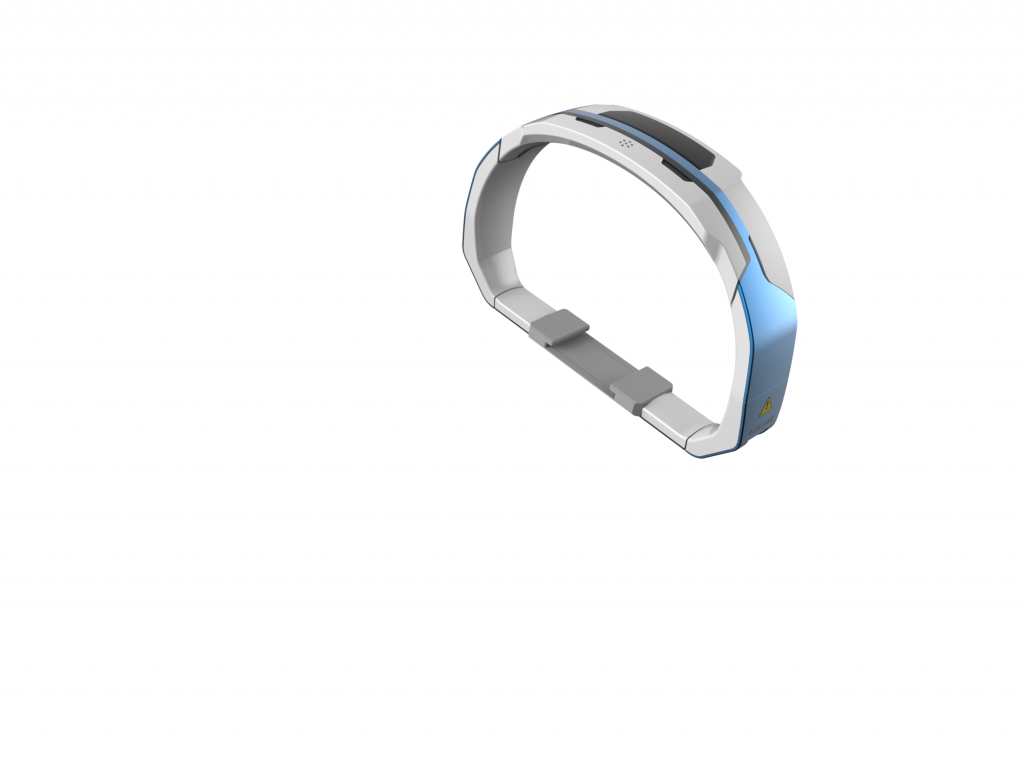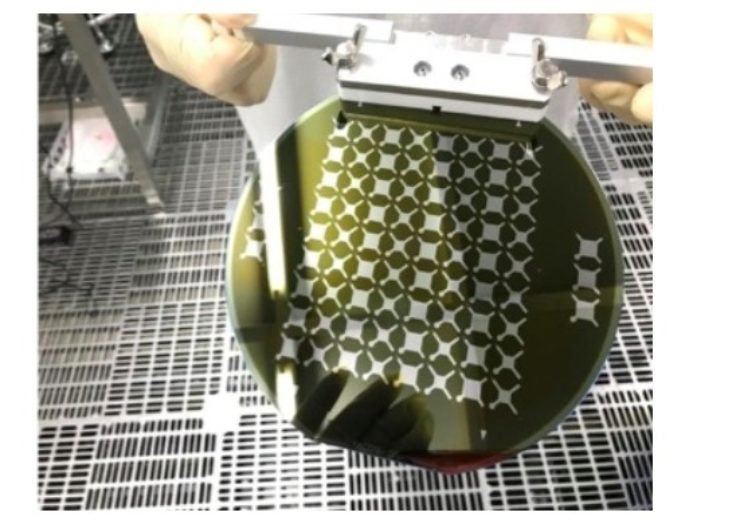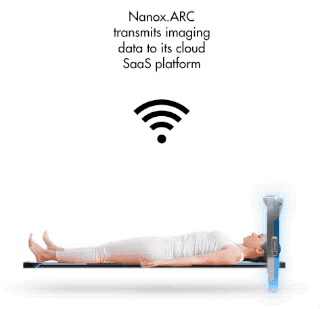
Of course, today, a huge machine called a CT scanner is the only thing close to the hand-held device used by Dr. McCoy and later fellow Star Trek medical officers.
Current day CT scanners are massive and fill nearly an entire room. CT scanners are also extremely expensive. Furthermore, those who receive a modern day CT scan are exposed to significant radiation. Until now, the notion that your doctor could scan your full body each year and diagnose illness — before symptoms customarily identified, i.e., at a stage when that disease is still easily treatable — seemed destined to remain in the realm of science fiction.
That was until the recent announcement by Nanox.vision, an Israeli/Japanese company, which applied a billion dollars in research (initially conducted by Sony) to create a cold cathode X-ray source. This revolutionary technology has been employed to create a CT scanner that fits into a suitcase and costs $10,000 per device unit. Nanox has successfully developed a new 5D X-ray source, based on advanced nano MEMS technology that generates a stable X-ray stream at low voltage and a fraction of the cost.
Nanox has not only developed this new product concept. The groundbreaking nanotechnology company has also teamed up with SK Telecom, South Korea’s largest telecom operator, to further cultivate and market to the new concept. SK Telecom has invested in Nanox and the partners have established a joint initiative to “democratize” medical imaging; launching “a global consortium driving preventive healthcare screening for all”. The hallmark slogan 1x1x1 (i.e., 1 person x 1 scan x per 1 year) trumpets the Nanox push to enable every person on the planet to receive a full body scan, once each year. According to Nanox, cancers that are detected early enough have a 70–99% survival rate. An accurate CT scan is one of the few ways to identify early stage Cancer. Regrettably, the cost to operate a standard CT has remained too high to utilize for routine detection scans. Even when a CT scan is prescribed to provide a diagnosis, the wait time is often extensive.
Nanox envisions their new, improved CT scanner in every lab — so that when you receive your yearly blood test, you would also get a full body scan. The image would be processed and then analyzed by advanced AI Vision technology. Since according to this plan, individuals would get yearly scans, it will be possible to automatically compare the current year’s scan to images from the previous year and rapidly detect any anomalies.

“If we manage to reach the 1x1x1 vision, we will be able to help save over 8 million people every year with regard to cancer alone,” said Ran Poliakine, founder of Nanox.
Poliakine continued: “This is the true democratization of healthcare, in which medical imaging will be accessible to all people globally and will cease to be the privilege of the few. We estimate that the economic savings will reach over US $1 trillion per year! That is an astonishing amount of money, which can now be diverted to better uses. The implications of our technology are beyond significant to humanity as a whole.”
Kim Il-ung, President of SK Telecom’s Hong Kong office said: “I believe Nanox is one of the most influential companies of our era. Their novel X-ray source can help save millions of lives each year and over a trillion US dollars in cancer-associated costs alone. SK Telecom has a great interest in disruptive healthcare initiatives, and the Nanox vision of democratizing medical screening to make it accessible and affordable is exactly where we believe we can make a real difference in improving the quality of human life. This is a strategic investment for us, and we look forward to working with the incredible Nanox team to shape the future of global digital healthcare.”
Nanox plans to seed thousands of new machines throughout the world, as part of the first stage of their initiative, in the hope of changing the very face of health care.
Of course, disrupting an industry as significant as the medical CT industry is not without challenges. Manufacturers of the present day million dollar systems are sure to fight back. Nanox hopes it can convert the makers of CT systems into Nanox service providers — in the hopes that providing billions of scans a year could turn out to be a much more lucrative than the sale of their current older hardware, (even if the goal is to provide a scan for $30 per image).

While Nanox has already developed the technology to build an inexpensive scanner and to analyze those scans with partner companies using AI, there is a small technical complication that remains. Today, a 3D image of a full body scan requires 40 GB of storage. Both the upload and storage of these gigantic files is a challenge that must be addressed. Nevertheless, despite any challenges, the new CT system developed by Nanox promises to revolutionize preventive medicine.
https://digitone.news/?p=1005
Nanox unveils commercial-grade digital X-ray technology
Nanox’s new technology enables a controlled generation of electrons using low voltage to work similar to the legacy X-ray source

Image: Nanox launces digital X-ray solution. Photo: Courtesy of Nanox.
Medical imaging technology firm NanoX Imaging has introduced the first commercial-grade digital X-ray technology deploying its silicon MEMs semiconductor technology.
Nanox said that digital X-ray technology has been introduced, following 15 years of Japanese and Israeli development and a substantial investment, to overcome the barriers to modern medical imaging.
In addition, the advanced digital X-ray source is designed to reduce the cost of medical imaging systems, making medical imaging more accessible and available globally.
Nanox founder & CEO Ran Poliakine said: “It is a proud moment for my team and I. We have been working for years to produce a stable digital X-ray technology that we believe can literally be the basis of saving millions of lives. Our mission is to replace all legacy sources with our digital X-ray.”
Nanox is commercialising digital X-ray source, after achieving operating stability
The company said that the base technology of the X-rays remained fundamentally unchanged for the past 124 years, since the discovery in 1895, by Wilhelm Röntgen.
In legacy systems, a filament is heated up to more than 2,000° Celsius to generate X- rays, by creating an electron cloud, which is pulled towards a metal anode to produce X-rays. The analog process of X-ray generation, called hot cathode process, involves continuous radiation.
The international teams of Israeli and Japanese engineers led by the entrepreneur Ran Poliakine, have digitally generated the electrons without the use of heat, called a cold cathode process.
Nanox has developed a unique electron gun, based on a field emission array of 100 million molybdenum Nano-cones, replacing the metal filament used in legacy sources.
The company said that the new technology facilitated a controlled generation of electrons using low voltage, providing the same effect as the legacy X-ray source.
Nanox Japan CEO Hitoshi Masuya said: “There were many attempts to create a digital, Cold Cathode X-ray source over the past few decades with little to no success.
“While some companies have made achievements using carbon nano tubes as a basis for field emission X-ray with similar approach to the one used by Nanox, to the best of our knowledge no company have achieved a commercially stable source that can be embedded inside a medical imaging system and operate with an acceptable lifespan.”
https://www.nsmedicaldevices.com/news/nanox-introduces-digital-x-ray/
- - - - - - - - - -
Traditional systems are too complex and expensive for mass deployment
With a $1-3 million price tag for the top range of medical imaging systems, a timely, preventive screening for symtomatic patients still remains the privilege of the few.
Our technology changes all that
Introducing the Nanox.ARC
Over 8 years of development produced a novel digital X-ray source that enabled a significant reduction in medical imaging systems cost and footprint


The Nanox Initiative
Driving Medical Imaging Availability
Mass deployments of medical imaging systems at an affordable pay-per-scan service model.






https://www.nanox.vision/
Foxconn teams up with Nanox to make futuristic X-ray machines
Published January 16, 2020 — 12:59 UTC
Foxconn announced it has invested in Israel-based startup Nanox, to produce futurist and affordable X-ray machines. Apart from leading a round of $26 million investment, the Taiwanese company will also help with manufacturing these machines.
The X-ray machine, called Nanox.arc, looks quite cool and only weighs around 70 kg. So, it’s very portable as compared to traditional X-ray machines that usually weigh a couple of hundred kilos
Nanox said the idea is to make available where the traditional hospitals or clinics are not available. Apart from X-ray, the device will also support other scans such as CT, mammography, fluoroscopy, and angiogram.
The machine is paired with the company’s proprietary software Nanox.Cloud, that provides end-to-end medical imaging service offering image repository, radiologist matching, online and offline diagnostics review and annotation, connectivity to diagnostic assistive artificial intelligence systems, billing, and reporting.
Ran Poliakine, Founder & CEO of Nanox, talking to TNW on a call, said his aim is to make preventive scanning available to more people by making affordable and portable X-ray machines:
Nanox.arc is an affordable X-ray solution that will be priced around $10,000. That’ll help medical institutions invest into other equipments instead of spending thousands and millions of dollars on traditional scanning machines.
Poliakine said the system uses AI for better diagnosis: Nanox’s in-house AI works on making the best image available to radiologists using 3D reconstruction, and a third-party AI — such as Google’s recent model that catches breast cancer through X-rays —can assist experts making the right diagnosis.
Poliakine added another advantage of this machine is that it can startup and shut down immediately unlike traditional machines.
The company aims to start shipping the product by the first half of 2020. It aims to ship close to 15,000 machines in the next two years. Poliakine said a network of over 15,000 machines will also boost medical research with over 300,000 images being collected daily. He said currently, research on medical AI suffers from the lack of data, that’s where Nanox can step in and provide ample data.